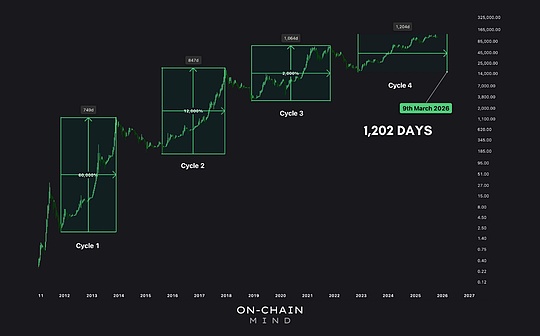
Author: arndxt, encryption researcher; translation: bitchain hozou
Why don’t I suggest that my friends “learn encryption knowledge first”?
Last month, I once again tried to guide a friend outside the circle into the crypto world.Just ten minutes later, her eyes began to become confused when the process went to “choose a wallet” and ‘now needed to pay Gas with another token’.This made me realize: what we are facing is not the knowledge gap, but the design gap.
A cruel reality is already very obvious: speculation brings the first wave of users, but it cannot bring the next wave of billions of users.The real popularity begins when crypto products become “invisible”—that is, when people benefit from it but don’t seem to realize they are using encryption technology.From the rise of stablecoins to the popularity of institutional pledges, to the increasingly important role of AI in shaping the digital economy, the foundation for large-scale adoption is being laid.But to realize this future, we must stop expecting users to learn encryption and instead start building products that make them unaware that they are using encryption technology.
The following are eight narrative directions and related projects that I think are worth paying attention to:

1. The winning way for the next generation of wallets: do one thing to the extreme
We are witnessing a major structural change: users are forming habits around two complementary wallets: one feels like the “daily wallet” of the fintech app, and the other is like the “vacity wallet” of the bank app.
The wallet experience is being differentiated.Developers who try to stuff all their features into a single interface will eventually lose to a combination of solutions that focus on two points: (a) frictionless introductory experience and (b) high-security storage solutions.
More than half of people use 2-5 wallets at the same time, and nearly 48% say this is because each network still lives in its own walled garden.

The head concentration is obvious:
Among users with more than 2 years of experience, 54% of users use Binance, Coinbase, MetaMask or Trust wallets in a concentrated manner.
Among the novice group, no wallet has a market share of 20%.
However, self-hosting is still daunting for most users.Interestingly, Binance’s own self-hosting solution, Binance Web3 wallet, attracted only 22% of users, suggesting that users are still hesitant even if they provide a simpler self-hosting path within a familiar brand ecosystem.

Multiple wallets are helpless.
After months of observation, I understand one thing: people don’t want to manage multiple wallets at the same time.They do this because there is no choice.
Obviously, the “seamless multi-chain future” we’ve been talking about hasn’t really arrived yet.48% of users maintain multiple wallets mainly to access different blockchain ecosystems.
44% of users are now intentionally splitting their wallets for security reasons, up from 33% last year.
This tells me two things: the industry is failing to achieve true interoperability and is passing operational complexity on end users; at the same time, these users are becoming smarter – they no longer blindly trust a single wallet to handle all scenarios.
Phantom — Popular wallets on Solana and Ethereum.
2. Misalignment of behavior and beliefs
We remain in this field for speculation.
Indeed, 54% of users actually used cryptocurrency to make payments or peer-to-peer transfers in the past quarter.But when asked about favorite activities, only 12% chose to pay.
On the contrary, trading (spot, meme coins, DeFi) is still the most important behavior of all types of users every week.
Speculation will continue to seize the share of attention that practical features deserve in the future until developers eliminate these resistances.
This gap stems from three major resistances: cost resistance.39% of users believe that high L1 Gas fees are still the biggest barrier to adoption, which is the most prominent issue.Experience resistance.Only 11% of users believe that the current introductory process is popular enough.Network resistance.Payment flows to platforms that already exist for merchants and friends; the split wallet and chain ecology destroys this closed loop.
Huma Finance – a pioneering payment finance solution, cross-border payment financing without pre-deposit funds, real returns from real payment flows (10.5% annualized rate of return).Tectum – Instant, zero-fee cryptocurrency payment.Alchemy PayNOWPayments
3. Public chains will become the invisible infrastructure layer—users do not even need to perceive their existence
Multi-chain ecology is essentially the result of division of labor and cooperation:

The winning user experience model is “chain abstraction” – wallet sessions can smoothly route orders, balances and identity information to the backend that provides the best latency-cost-security combination, without user choice throughout the process.
Ethereum is still an institutional settlement layer, but Solana is quickly establishing its position as the preferred public chain for high-frequency and highly involved retail activities.However, judging from the development momentum, Ethereum is facing unprecedented competitive pressure.Solana achieves 3000% annual fee growth and 127% TVL growth, the highest growth rate among all L1s.This surge is mainly due to the meme coin boom (especially in the fourth quarter of 2024), and also reflects Solana’s structural advantages in speed and transaction costs.

User perception has been formed: 43% say Ethereum is the most commonly used public chain; 39% choose Solana; only 10% mainly use L2 – this proves that interoperability remains at the theoretical level.
Chainlink — Leading cross-chain interoperability protocol (token LINK) with CCIP
LayerZero — Full-chain interoperability protocol (token ZRO) using OFT standard Axelar — Cross-chain communication network (token AXL)
Wormhole — Cross-chain messaging protocol (Token W) SocketDotTech — Cross-chain interoperability protocol (tokens to be issued soon) eOracle — an oracle platform based on Ethereum security, providing smart contracts with permissionless professional data services.
4. The false sense of security of improving user confidence
Users claim to feel safer on the chain, but their wallet data tells different stories.
How to explain this contradiction?Users confuse personal protective measures (hardware wallet, multi-signature) with systemic risks.At the same time, attackers have industrialized “phishing as a service” and shortened the average survival cycle of malicious contracts to one-quarter of the original.
The focus of product optimization should be: to transform the sinking anti-phishing user experience (clear signature interface, real-time transaction simulation, MPC transaction firewall) from advanced additional features to default configuration – especially in mainstream “daily use” wallets.
5. NFT as a digital cultural infrastructure
The NFT market is undergoing the necessary adjustments to move from speculative PFP projects to real digital goods and practically driven experiences.This is the first time that the NFT market has shown a sustainable development trend.
The surge in low-priced collections on platforms like Rodeo.Club and Base chains marks the trend ofAffordable, high-frequency interactive modeThe transformation – this mode is similar to in-app purchases in-game.
NFT is becomingInteractive infrastructure of the digital economy.
NFT will become the default interactive layer for consumer-grade applications:Loyalty points, badges, membership privileges – all of which will increasingly be presented on-chain in NFT format.Ownership will realize cross-platform transfer and transactions, release secondary market value for users and open up new profit channels for brands.Imagine Starbucks’ loyalty program running on the chain: points earned in one app that unlock benefits across the entire network of partner services.
The rise of cultural capital as currency:NFT is rapidly becoming a user in the digital spaceMechanisms for demonstrating identity and cultural belonging.As social platforms integrate on-chain assets, NFT ownership will evolve into a major form of digital self-expression, just like wearing branded clothing in the real world.
The evaluation criteria will shift from floor price to user retention:The era of judging NFT by speculative value is ending.The new metric isUser retention and participation:How frequently does users interact with assets?Are these assets tied to ongoing experiences, content or rewards?Builders should design an NFT ecosystem that encourages repeated participation, achieving this through unlockable content, dynamically evolved token attributes, and real-world entitlements.
AI+NFT will start a new wave of personalized dynamic assets:AI-generated NFTs bound to user behavior, emotions, or community events are coming soon.These dynamic assets evolve with user participation, creating deep personalized experiences and emotional connections that static assets cannot achieve.
Treasure DAO – NFT infrastructure equipped with MAGIC tokens
Mocaverse NFT — Infrastructure (MOCA token) connecting the Animoca brand ecosystem Rodeo Club — NFT interactive platform NFP — AI generation NFT platform (NFP token)
Finalbosu — Popular series on the Abstract chain
Good Vibes Club – An emerging series with active communities
Onchain Heroes — a well-known series on the Abstract chain
Hypio — a series of fast-growing transaction volume
steady teddys — Popular series on Berachain
Pudgy Penguins — a leading NFT brand that is mainstreamly adopted (Walmart sells physical toys, PENGU tokens)
Bored Ape Yacht Club — Iconic Series (Strong Community and APE Tokens)
CryptoPunks — The original NFT series with historic significance
Azuki — Japanese comic style series (ANIME token, strong brand influence)
doodles — Colorful Series (Recently launched DOOD tokens in Solana)
Milady Maker — Cultural Phenomenon Project (CULT Token, Strong Community)
6. Bitcoin as a macro asset category
Bitcoin has evolved from speculative assets toFinancial tools at the macro level.
A parallel change is underway: driven by the maturity of the Layer 2 ecosystem (especially the Lightning Network and emerging agreements such as Ark and Fedimint),Bitcoin is quietly becoming the trading layer of global settlement.
Bitcoin, as the invisible settlement layer, is powering the next generation of cross-border payments, institutional finance and sovereign digital reserves.
The macro correlation of Bitcoin: From hedging tools to strategic reserve assets:Countries facing the challenge of de-dollarization are quietly integrating Bitcoin into the sovereign reserve diversification strategy.Institutions and even sovereign actors are seeing it as a necessary insurance policy to prevent systemic financial risks.
Layer 2 protocol releases the utility of Bitcoin payment:Lightning Network has evolved from a technical experiment to a scalable real-life payment layer, enabling nearly instant and low-cost cross-border transactions.New solutions like Fedimint and Ark are addressing Bitcoin’s user experience and privacy restrictions, making it a truly viable currency for trading in emerging markets.Builders should focus on developing payment solutions and cross-border financial products based on these Layer 2, especially for remittance corridors and areas plagued by currency devaluation.
Bitcoin as collateral—the rise of institutional lending and funding strategies:Mainstream institutions have begun to use Bitcoin not only as a passive investment, but also as a structured financial product.Productive collateral.Bitcoin-secured credit tools, fund management solutions, and derivatives that are seamlessly connected to traditional financial markets are expected to emerge in large quantities.
The global settlement network that is forming:As geopolitical friction intensifies, demand for neutral and anti-censorship settlement channels will grow.Bitcoin has a unique advantage, which can serve as a global clearing layer for trade settlement, forming a complementary rather than competitive relationship with fiat currencies.Abstracting the complexity of Bitcoin transactions for end users and using Bitcoin to achieve seamless settlement at the bottom will drive Bitcoin’s adoption outside the crypto-native circle.
Solv Protocol — The first on-chain Bitcoin financialization and Bitcoin banking solution (SOLV token)
Stacks — Leading Bitcoin Smart Contract Layer2 (STX Token) Alpen Labs — Bitcoin Layer 2 Solution Babylon Labs — Bitcoin Cross-chain Bridge Solution (BABY Token)
Zeus Network — Cross-chain communication platform (ZEUS token) corn — Ethereum Layer 2 Bitcoin Solution (CORN token)
Runes ChainaI — Bitcoin Layer2 Solution (RUNIX Token)
7. Institutional pledge: a new paradigm for strategic fund allocation
As Bitcoin establishes its position as a core component of the macro asset class and modern funding strategy, institutional investors naturally begin to think about the next question:How to make these assets generate profits?
While retail investors are still chasing speculative returns through meme coins and high-risk transactions, institutional funds are quietly flowing in steadily.Structured, profitable crypto assets——Especially through the staking ecosystem of Ethereum and Solana.
Bitcoin may still be the first choice for macro hedging, but pledge is rapidly becoming the entry of institutional fundsProductive on-chain capitalbridge.
New Institutional Strategy:
Bitcoin shifts from store of value to productive capital:With the emergence of Bitcoin’s native staking mechanisms (such as through protocols such as Babylon and the upcoming BTC Layer 2 solution), Bitcoin has also begun to enter the field of income generation strategies without damaging its core currency attributes.
The real opportunity lies in infrastructure, not validators: The next billion dollar inflow of institutional funds will come from providingA platform for institutional-level custody, compliance reporting and risk control pledged products.
Uncertainty in the macroeconomic environment for returns diversification: With interest rates peaking and traditional fixed income products falling, pledge income becomes a newAfter risk adjustmentReward category.This is especially attractive for corporate funds seeking diversified allocations, hoping to get rid of cash holdings and low-yield bonds, while avoiding the risk of speculative crypto asset volatility.
Core DAO — Self-hosted BTC staking solution (CORE token)
BounceBit — Institutional Pledge Platform (BB Token) TruFin Protocol — Institutional Liquidity Staking Archax — Regulated Institutional Exchange (supports HBAR Pledge)
8. Regulation, stablecoins and AI: The next wave of growth entrance
Compliance will open up stablecoin channels → cheap, instant global payments create real daily touch points → verifiable on-chain traceability and become the trust layer for AI to generate value.Payment is just the beachhead for this change.
Regulatory Optimism:86% believe that clearer rules will accelerate adoption, while only 14% believe that they will hinder innovation.
Stablecoin growth momentum:The holding rate doubled to 37% year-on-year, and has become the default payment channel in more than 30 Stripe markets.
AI synergies:64% believe that AI will at least accelerate the development of the crypto industry, while another 29% expect to form a two-way flywheel effect.
WLFI — A stablecoin anchored by 1 dollar (WLFI token)
Ripple — RLUSD stablecoin (using XRP as Gas token) Ethena Labs — USDe stablecoin (token for traditional finance will be launched soon) OpenEden — Earnings USDO stablecoin Syrup.fi – SyrupUSDC — Institutional income scheme (stablecoin 10% annualized rate of return) cap — Stablecoin agreement that provides trusted financial guarantees
Conclusion: UX 2.0 era – Elimination without evolution
Users are no longer confused by the halo of “web3”.What they expect is: Web2 level ease of use, Web3 level ownership control and AI level intelligent experience – either of which are indispensable.
Teams that can achieve “chain selection without any effect”, eliminate the pain points of handling fees and build predictive security mechanisms will transform the field of encryption from a speculative paradise to a link to the on-chain Internet.The next billion users won’t even realize they are using web3 products – this “unsensory experience” will become the ultimate victory of user experience.








